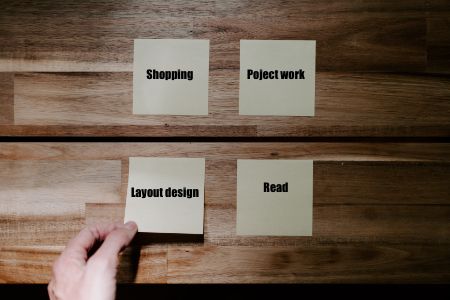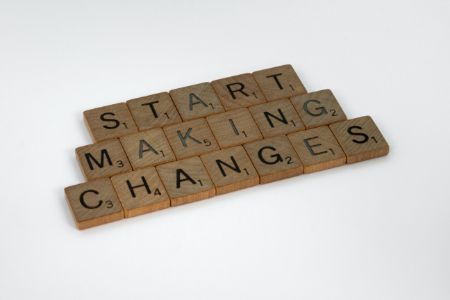How to Do 🤸♀️ Things
How to Do Things: Productivity for the Productivity-Challenged is a guide for those like us 😩 struggling to overcome time-wasting procrastination and become more productive in life using straightforward strategies. But we won't lie to you, this is heaps harder than it sounds!

The Guide's Primary Goals 🫵
- Increase productivity by …
- Quickly creating major habitual improvements …
- Using an immediately accessible and maintainable system.
What's the Point of Being Productive? 🫵
- Improve life with less time completing tasks so more can be accomplished.
- Achieving more — in less time.
- Having more time promotes more productivity.
- Accelerate progress in personal learning.
- Stop being stuck at beginner level.
- More time to do more enjoyable things.

Starting with a To-Do list, tasks are done one at a time, in 25-minute Pomodoro blocks 🧱 with zero interruptions.
These blocks should be thought of as identical bricks — each one representing a chunk of work building up completed tasks. Each task is a block. Some tasks take one, some take more. By making blocks, things are built that improve life — degrees, promotions, skills, knowledge, confidence etc.
Working in blocks removes non-productive habits like 'busy work'.
Immediate Improvements 🫵
- Quantity — more blocks each day.
- Quality — making blocks that do more.
- Consistency — refine block-building so quantity/quality is sustainable.
Many of us know of the Pomodoro Technique. But — just like beneficial regular exercise — that doesn't mean we do it. To benefit, you have to consistently implement the block system.
Requirements? 🫵

- An alarm.
- A paper To-Do list of tasks.
- Paper to mark completed blocks.
Steps for Each Block 🫵
STEP 1: Choose a Task From the Task List. 🫵

Choose the (next) task. With practice, discover an optimal task-order — tough ones first or warm up with easier tasks or another approach. For the first few blocks, pick simpler tasks to get comfortable.
STEP 2: Picture & Focus on Finishing 🫵

Use five-ten seconds to picture completing the task. Doing this connects feelings of doneness — boosting motivation and clarifying intentions. Without this it can feel as if you're not working toward anything.
STEP 3: Build a 25-minute Block & Work Towards Finishing 🫵

Things get done by making each block 25-minutes of quality work — solid.
STEP 4: Mark Down Each Completed Block 🫵

When timer goes block's completed. Mark it down for two reasons: First, to remind that blocks are permanent — building materials, laid down to build a better life. Second, to see how many can be done in a day or a half day.
STEP 5: Consider a Short Break 🫵

Breaks aren’t always necessary and mandatory breaks probably aren’t great for the productivity challenged like us, but, you should at least stand up. And, if the intention isn't there, a break might be needed.
Then, reassert your intentions for the next block. Don't skip Step 1 and Step 2 and enjoy consciously focussing your intentions before …
STEP 6: Repeat & Refine the Process. 🫵

After a break build another block. That means beginning the cycle again. Remember that all the same steps are necessary for every block. Don't skip steps between blocks because, without them — entropy invades!
Doing the steps each time, builds them as second nature. Conciously repeating them — saying them out loud — trains the brain to expect what’s next …
Okay …
One: choose a task …
Two: think of the finish line completion … etc.
Things to Notice 🫵
- A lot can be done in 25 minutes.
- You don't need hours to achieve — too long a time may be less urgent.
- A block is enough time to complete a few small ones or dent a big one.
A Day of Work 🫵
Eight hours is enough time for sixteen blocks. But, doing three or four in the morning and again in the afternoon is enough for a productive day.
Stress often revolves around fear there're not enough days or weeks to get everything done. Blocks make it clear that productivity isn’t about how many days are left — it’s about how much work can be completed.
Blocks allow a start even when there's no motivation. Try an easy block before giving up. Often you'll want to continue working afterward, because the feeling of getting things done tends to defeat negativity/laziness.

Bad Blocks Don’t Count 🫵
Turfing compromised blocks is productive because, by doing it, you’re guaranteeing block quality which always outranks quantity. Making five fewer real blocks is better than ten more duds. Standards are productive!
And several blocks are enough to move any project forward, or knock off some small tasks. Imagine what ten or twelve could do if done every day?
Generally, blocks scale linearly — if a project takes ten days working at a rate of three blocks per day, then six blocks per day should take about five.
Adding a block when there's a free spot helps. If falling behind, you don’t need 'more time', you only need to build more blocks.
Increasing quantity is the way to become more productive but improving quality is the long term goal. Getting done in three blocks what used to take six, makes you exponentially more powerful. Each day has effectively become longer and you need less of it to keep up with work.
Again, improving quality is a matter of …
- Harnessing the urgency of a time limit.
- Keeping the end of the task in mind — Always Be Closing.
- Identifying and cutting out time-wasting habits & distractions.
Don't Stop ✋ Keep Making 🤝 Blocks 🧱 🫵
Since making blocks is part of the longer process of building what you want in life, you want to be able to maintain production over time. The quantitative nature of blocks allows you to define goals for tackling long-term projects or maintaining regular obligations.
A Block-Driven Workday 🫵
The night before a big day, write down a plan — specifying a start time.
- Choose a task for the first Block (Step 1)
- Picture finishing the task (Step 2)
- Start the timer (Step 3)
- Record the completed block (Step 4)
- Stretch (Step 5)
- Repeat the process (Step 6)
During the day, Use any extra time to work down the To-Do list. As usual, making a dent in the next day’s work is easy. And, whenever a spare half hour presents for getting something done, at home, school or work — build a block.
Productive Living 🫵

Virtually any goal or aspiration can be met with a number of blocks — just parse the goal into rough steps, then build blocks for each.
Want to learn a language? In one block map out different parts and build a plan to practice them. Then, start applying blocks to each one. Track how long they take to master. A block a day goes a long way in a year. Learn what sort of blocks yield meaningful progress and what’s a waste of time.
Achievment is built from effort and blocks are an efficient way of budgeting and directing that. Working towards anything the path is always finite if it can be done in some number of blocks.
Tools 🫵

Instead of procrastinating, build a Right Now List with tasks to be done next — go from being not sure what’s next to knowing and doing what is.
We're creating task lists from a master Tasks.jpg file that's displayed as our external monitor's wallpaper.
Also, we're breaking our week up into Monday-Friday and keeping weekends separate. This suits time-wise as we can do a (week-daily) block when we arrive home from work that there's not enough time for earlier in the day. Weekends are for less regular blocks — shopping, laundry, house cleaning etc., which are too disruptive on week days. We haven't found it easy but we're sticking at it and trying to learn from our mistakes and customising the process as we make our way to being productive.
As a weak-minded person lacking discipline and determination this isn't too intimidating but the work still has to be done — there's no escaping that and that's the hard part.
None of this is easy, but. We're still struggling with modifications to schedules and doing 2-hour big blocks on one subject/task to get over humps may be more effective that 25 minute blocks.
The master list + daily list just have to be done — they do work! And, multiple blocks of very different content is probably harder than multiple hours on one or two related topics?
Also, if you delay a task instead of doing it now, there’s a way to ensure it get's done by freeing up time today to do it first thing tomorrow … Clear the workspace have tools and other requirements ready to go. List the steps and put that somewhere prominent. Be clear on the very first thing to do.

We don't get paid 💰 for discussing this (or anything else) but we thought it was potentially helpful and therefore worth learning/writing about.
- ↜ Previous: Marriage 🤵♀️🤵♀️ Equality
- ↝ Next: How Brains 🧠 Learn